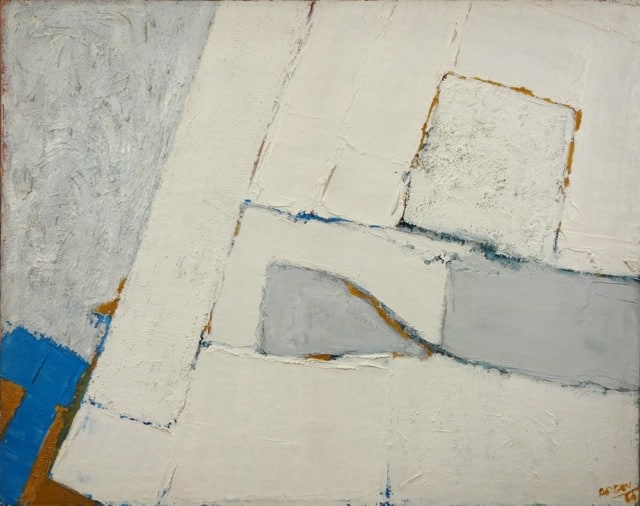Beloosesky Gallery is interested in purchasing paintings by Michael Argov.
Please call (917) 749-4557 or email us at info@beloosesky.com.
Michael Argov, born Michael Zinger in 1920, in Vienna, was a painter and sculptor born to a family of Zionist merchants, who moved to Berlin in 1929. In 1933, the family immigrated to Palestine and settled in Haifa. In 1942 he studied at Avni Studio, the major art center in Tel Aviv, where he met Yehezkel Streichman who was to have a significant influence on Argovs' work. In 1945, Argov left the Avni Studio and moved to the Streichman art studio where he helps with administration and spent most of his time painting out of the studio. In 1947 Argov had his first a one-man show that received enthusiastic reviews. One of his works from the exhibition was acquired by the Tel-Aviv Museum.
Later in 1947, Michael Argov left for Paris and studied at the Ecole des Beaux-Arts, specializing in fresco painting. In 1948, the Israeli War of Independence drew him back to serve as an intelligence officer in the Navy. In September, as he was released from military service, he returned back to Paris to complete his studies. While staying in Paris he became very much involved with the artistic scene and in 1951 had a one-man exhibition that brought positive reviews of his work. In 1952 he received the first prize of paintings from Deauville in the composition category. A year later, in 1953, he presented his second one-man show, again, highly praised. In that same year he participated in an Israeli artists exhibition in Paris and won the 2nd prize. In 1955 he won the Othon Friesz Prize. From then onward, he participated in many group exhibitions and one-man exhibitions, spending most of his time in Paris and in Israel.
Throughout his extensive career, ranging from painting to photography and sculpture, Argov was constantly exploring the boundaries of plastic art and the perception of space. His early work included mainly realist figurative painting, focusing on landscape, portraits and female nudes. Studying in Paris during the late 1940s, he was greatly influenced by the "School of Paris" (L'ecole de Paris) and French paintings from the beginning of the 20th century. During the 1960's, a revolutionary turning point took place in his work, when he turned to abstraction and minimalistic color fields.
Michael Argov was drawn at first to a decorative and flattened synthesis of Matisse and Buffet, but later he immersed himself in lyrical abstraction which lead into the geometric shape formats of the optical abstraction that he employed towards the end of his career. By the 1970's his simplified luminous optical work reflected the influence of his contemporaries such a Jacob Wexler who was working in Israel during the same period.
From 1977, he served as chairman of the national committee of the Artists Association in Tel Aviv, and within this framework, he tried to alter the public status of the association.
Michael Argov died in Tel Aviv in 1982 after a heart operation.
EDUCATION
With Aharon Avni
With Yehezkel Streichman
With Avigdor Stematsky
TEACHING
1947-1951 Beaux Arts, Art Academy, Paris
EXHIBITIONS
Haifa Museum of Art, Haifa, Israel (1955)
Tel Aviv Museum of Art, Tel Aviv, Israel (1959)
The Venice Biennale, Venice, Italy (1970)
Helena Rubinstein Pavilion, Tel Aviv, Israel (1972)
Musée National d'Art Moderne, Paris, France (1957)
Museum of Modern Art, Sao Paulo, Brazil (1962)
Museum Wiesbaden, Wiesbaden, Germany (1971)

